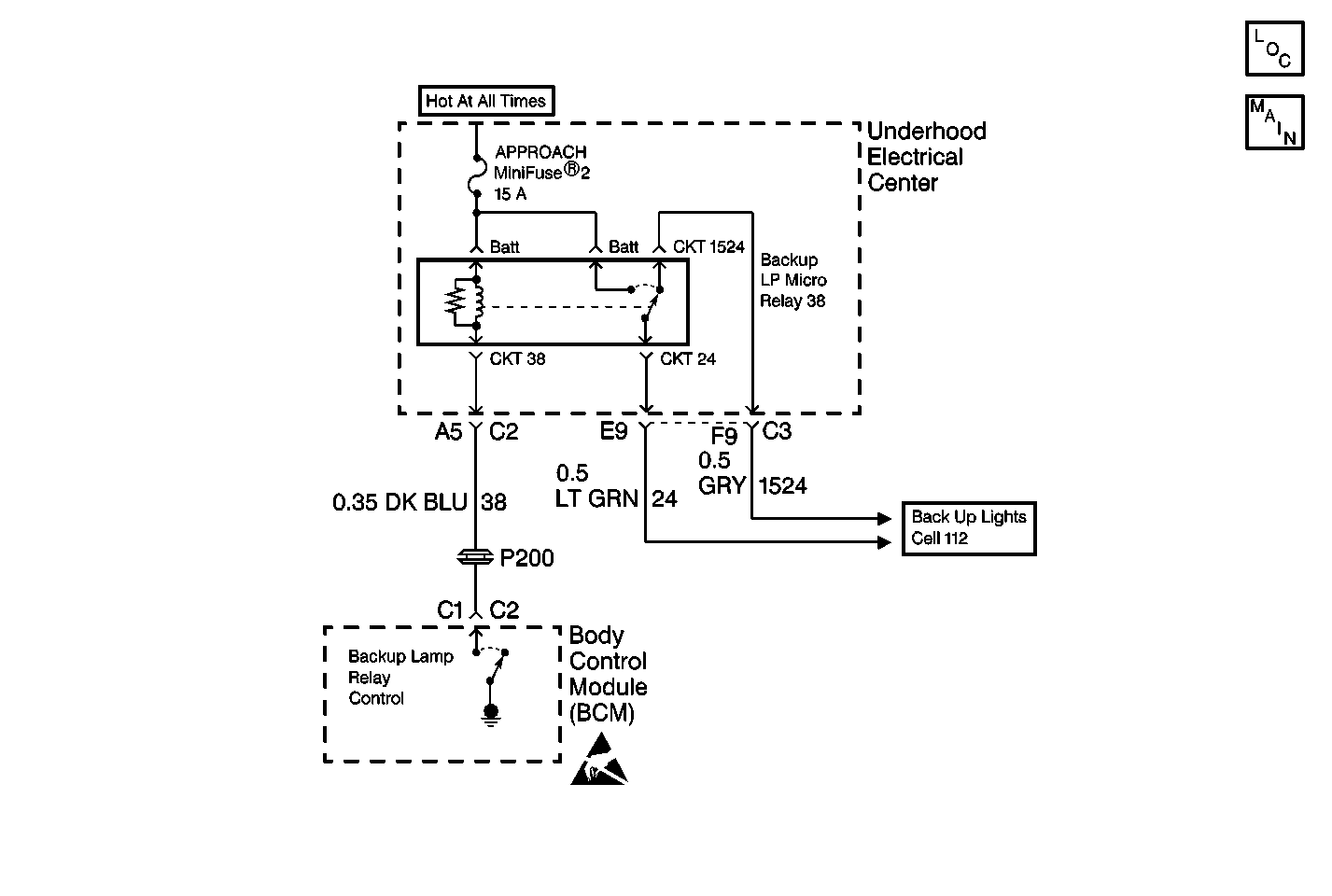
Circuit Description
The backup lamp circuit is part of a standard backup lamp system except for the addition of a relay and the BCM providing a control circuit. The BCM can ground CKT 38 in order to energize the relay and turn ON the backup lamps, allowing the lamps to be used for the UTD and approach lighting functions. The BCM monitors the voltage level on the backup lamp control circuit. When the BCM commands the relay ON, the voltage level on the control circuit should be low. When the relay is OFF, the voltage level should be high. If the BCM detects a voltage level other than expected, a malfunction is present and a DTC will set.
Conditions for Setting the DTC
| • | The BCM detects a high voltage level (a short to voltage or BCM open internally) in CKT 38. |
| • | The BCM can only test for this condition with the backup lamp relay energized. |
| • | All conditions must be present for 2 seconds. |
Action Taken When the DTC Sets
| • | Stores a DTC B2483 in the BCM memory. |
| • | No driver warning message will be displayed for this DTC. |
Conditions for Clearing the DTC
| • | This DTC requires an ignition cycle in order to change from current to history. |
| • | The BCM no longer detects a high voltage level in CKT 38 only with the backup lamp relay energized. |
| • | A history DTC will clear after 50 consecutive ignition cycles if the condition for the malfunction is no longer present. |
| • | Use the IPC clearing DTCs feature. |
| • | Use a scan tool. |
Diagnostic Aids
| • | The following conditions may cause an intermittent malfunction: |
| - | There is an intermittent short to voltage in CKT 38. |
| - | There is low resistance in the relay coil. |
| - | There are poor connections at the BCM, the underhood electrical center, or the backup lamp relay terminals. |
| - | The backup lamp relay is shorted to voltage internally. |
| • | If the BCM is open internally, or if CKT 38 is shorted to voltage BCM cannot provide output control for the backup lamps for UTD and approach lighting functions, but standard backup lamp functions will still operate normally. |
| • | If the DTC is a history DTC, the problem may be intermittent. Perform the tests shown while moving related wiring and connectors. This can often cause the malfunction to occur. Refer to Intermittents and Poor Connections Diagnosis . |
Test Description
The numbers below refer to the step numbers on the diagnostic table:
-
This test determines if there is an open in the U/H electrical center or fuse.
-
This test checks the backup lamp relay control circuit by using a scan tool to command the BCM to energize the backup lamp relay ON and OFF.
-
This test determines if there is a short to voltage in CKT 38.
Step | Action | Value(s) | Yes | No |
|---|---|---|---|---|
1 | Were you sent here from the BCM Diagnostic System Check? | -- | ||
Is the test light ON? | -- | |||
Does the test light turn ON and OFF with each command? | -- | |||
Check for a short to voltage in CKT 38. Was a problem found and repaired? | -- | |||
5 | Check for poor connections at the backup lamp relay. Was a problem found and repaired? | -- | ||
6 | Check for poor connections at the harness connector of the body control module. Was a problem found and repaired? | -- | ||
7 |
Is the circuit repair complete? | -- | -- | |
8 | Replace the backup lamp relay. Is the replacement complete? | -- | -- | |
9 |
Is the replacement complete? | -- | -- | |
10 |
Is the repair complete? | -- | -- |
